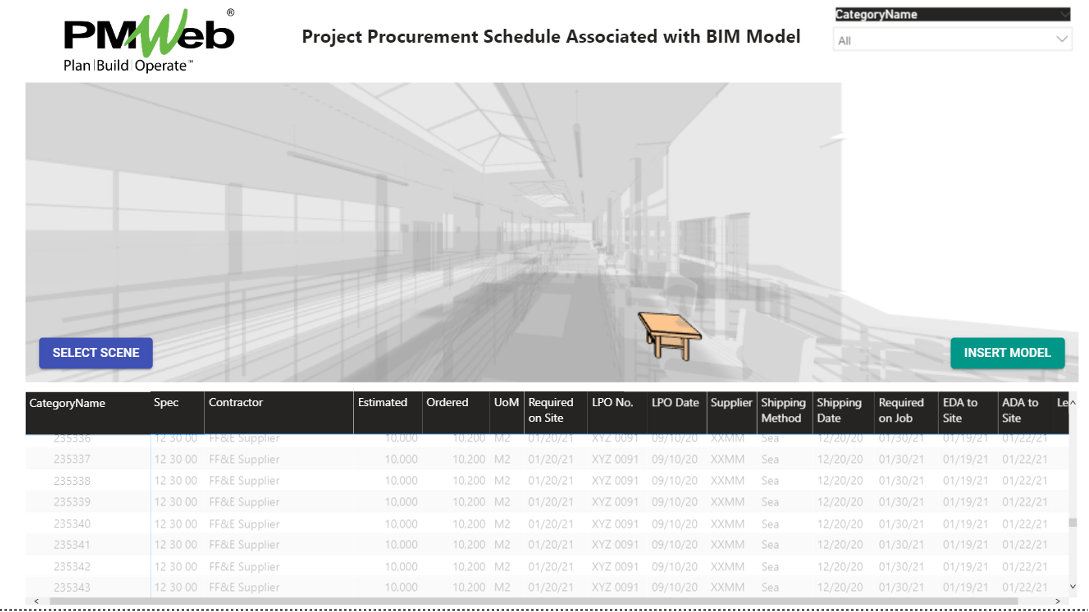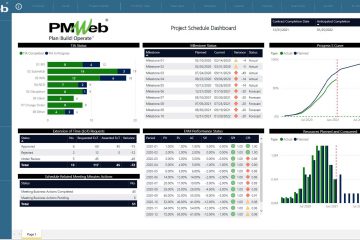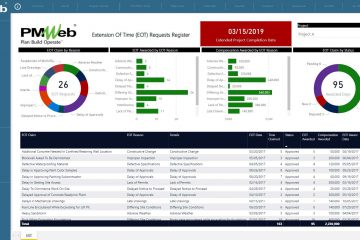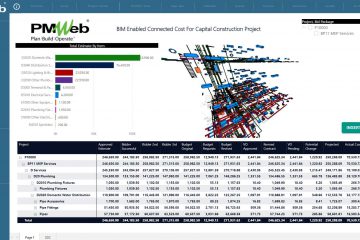The growing adoption by project owners of solutions to digitally transform their capital construction projects has raised the need to visualize better the information generated from the massive volume of data captured by the different information authoring software applications. Those are applications for planning and schedule like Primavera P6, cost estimating like CostX, project management information systems like PMWeb, BIM modeling like Autodesk Revit, among others. Those authoring applications and others are usually configured to be used by their intended users such as planning engineers for P6, cost estimators for CostX, architects and design engineers for BIM, and the many other project management team members for PMWeb.
The growing demand for better visualization coupled with the increasing volume of data can be consumed by project stakeholders using data visualization and business intelligence tools like MS Power BI. Most of the authoring tool that generates tabular data can be configured to read data directly from the authoring applications. Some could be direct like PMWeb, while others like P6 might need to have a data extraction program. Nevertheless, the challenge comes when there is a need for other visuals to be better to visualize the project’s information. In addition to the already developed custom visuals for maps, Gantt charts, among others, there is a need for BIM model visuals.
In addition to the BIM Visual developed by BLogic Vcad, a new BIM visual developed by KG-DEV called 3DBI (https://kg-dev.be/) is now available for Autodesk Revit and Sketchup. The 3DBI allows on-premise visualization of the BIM model, which is a must requirement for many capital project owners and is easy and straightforward to use. The 3DBI add-in for Revit will produce the needed output data and model for the selected 3D view. The BIM model that will become available in PMWeb could be viewed using Revit’s different scenes. The user can zoom in and zoom out, tilt the model, among other functions.
One of MS Power BI’s critical advantages is that it enables to associate multiple data sources, such as BIM data and PMWeb PMIS data, by ensuring that similar data field names are used on those applications. For example, the BIM model exported from Revit using 3DBI has two important fields, the BIM object ID and the Category Name. If there is a requirement to visualize the procurement scope of work on the BIM model, the PMWeb commitment module will capture all current and planned purchase orders. The purchase order will include details of the project, supplier name, method of shipping, etc. whereas the LPO detailed section will have components of all items to be procured such as quantities, unit of measure, and others, including the object ID and the Category Name.
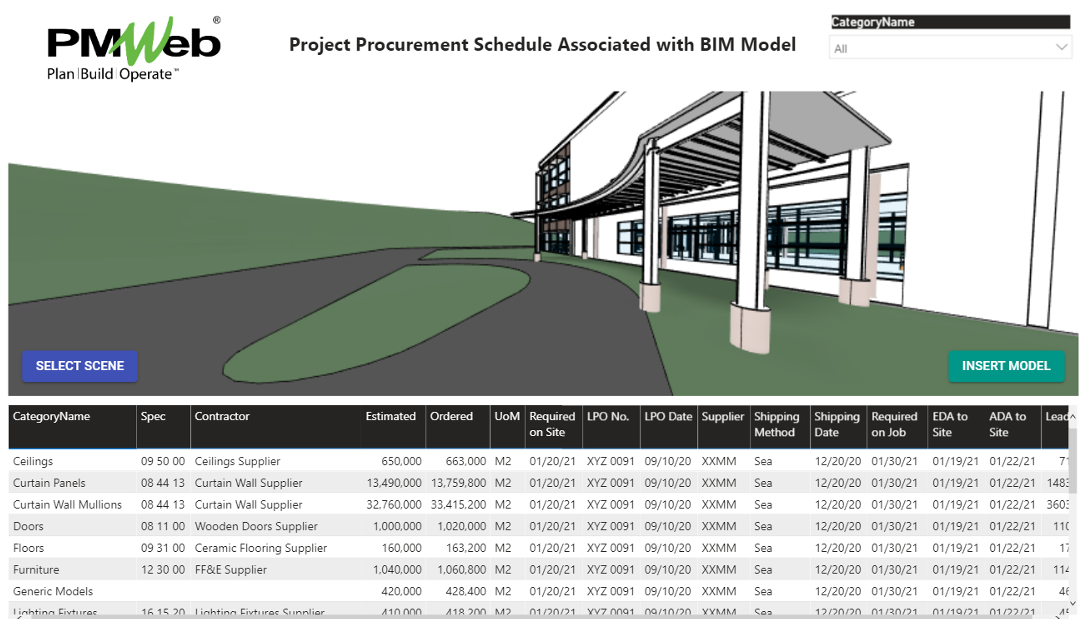
Similar to other MS Power BI visuals and tables, when there is a data association between different data sources, selecting a data value on one visual will automatically filter the other visuals’ relevant data. For example, assume that a project stakeholder wants to view the furniture in the project, whether the stakeholder clicks on the furniture category in the procurement table or select furniture from the category filter, the BIM model will automatically adjust the view to the furniture objects only.
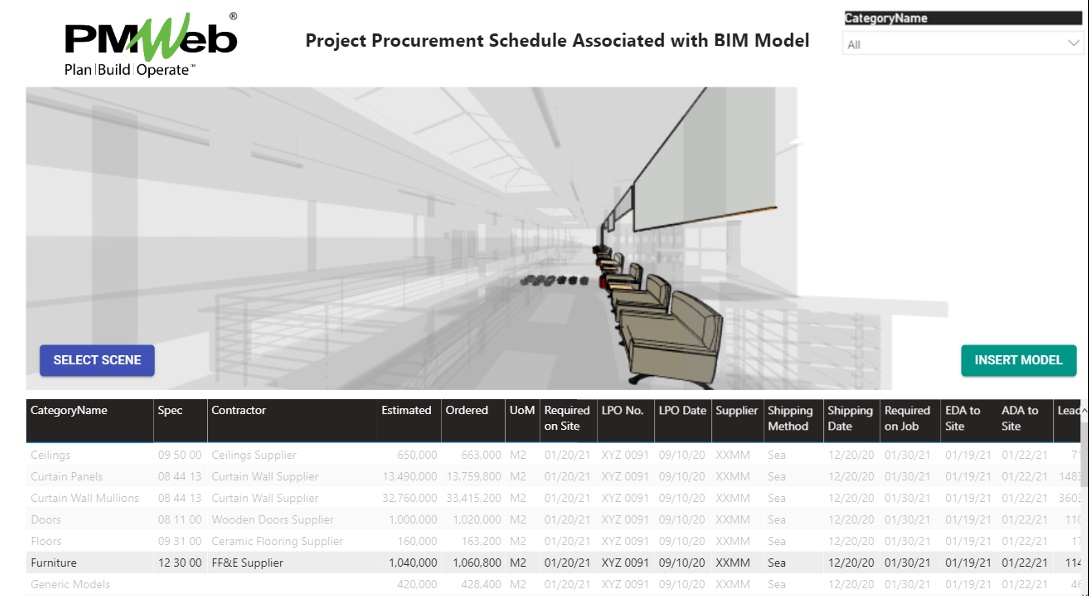
The project stakeholder can further drill down to locate specific objects or objects in the BIM model. The stakeholder must associate the same BIM object with other PMWeb data tables like those for submittal, Request for Information, Change Orders, among others. The power of visualizing PMWeb data on a BIM model is a compelling capability for stakeholders to have the dimension of project information location also the other graphical and tabular visuals they are used to have.
